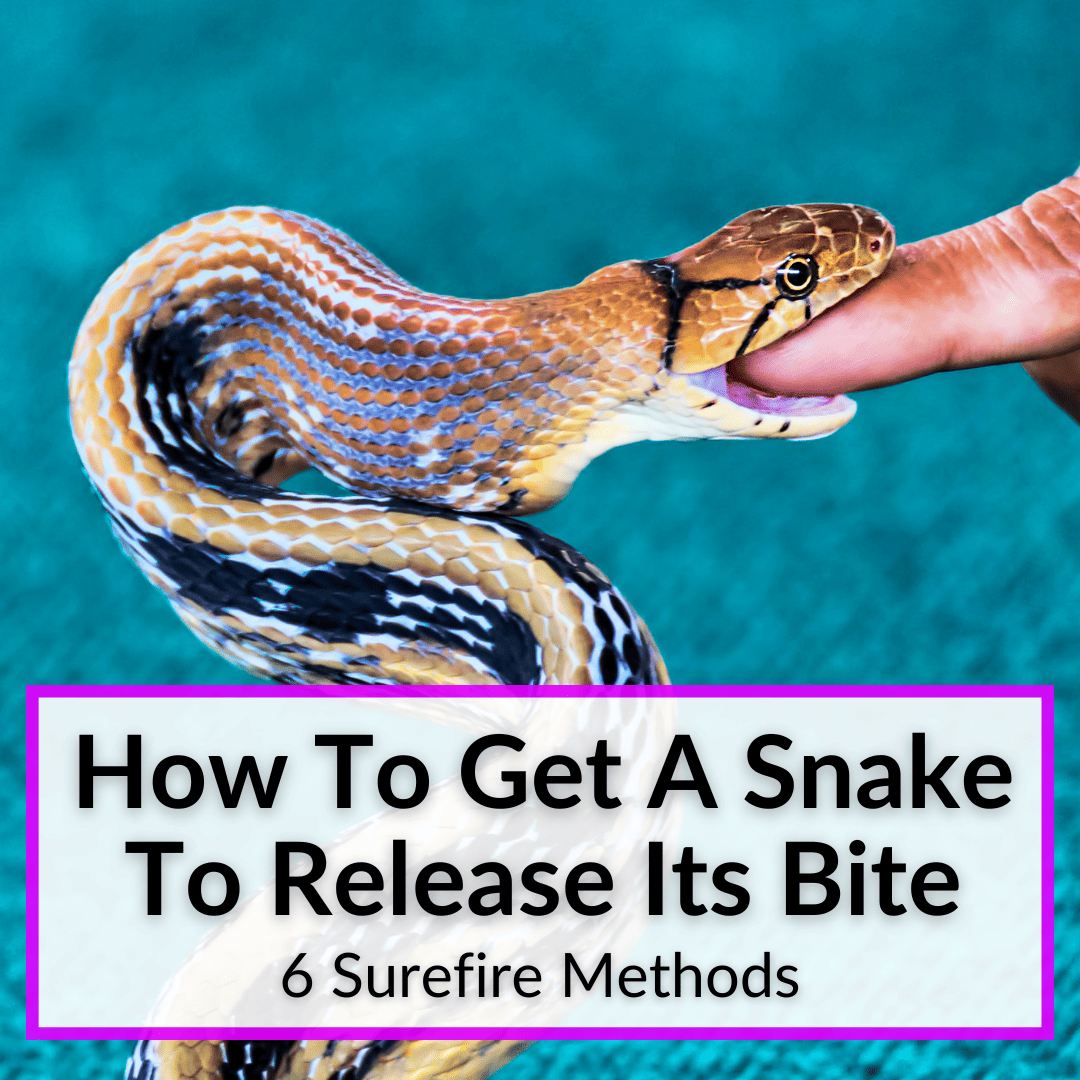
There is a good chance you will suffer a snake bite.
Of course, for people who don’t own snakes, this is often their worst nightmare.
The good news is: snake bites are exceedingly rare, if you don’t regularly interact with them.
Either way, it is still a good idea to know how to get a snake to release its bite.
They don’t always do so on their own, especially the constrictors.
So keep reading to learn six different methods you can employ to get a snake to let go. Which one is best will depend on the snake in question and the other circumstances surrounding the bite.
Table of Contents
How To Get A Snake To Release Its Bite
If a constrictor, like the popular ball python, bites you and does not let go, use a blunt butter knife to gently pry its mouth open. If the snake is larger, get a family member or friend to squirt some water, Listerine, vinegar, or hand sanitizer on the snake’s face so as to startle it.
Sometimes, rubbing the snake’s scales against their lay or bending their tail backward can also get the snake to release you. Let’s take a closer look at 6 different ways you can remove a snake that is biting.
6 Ways To Remove A Snake While It Is Biting
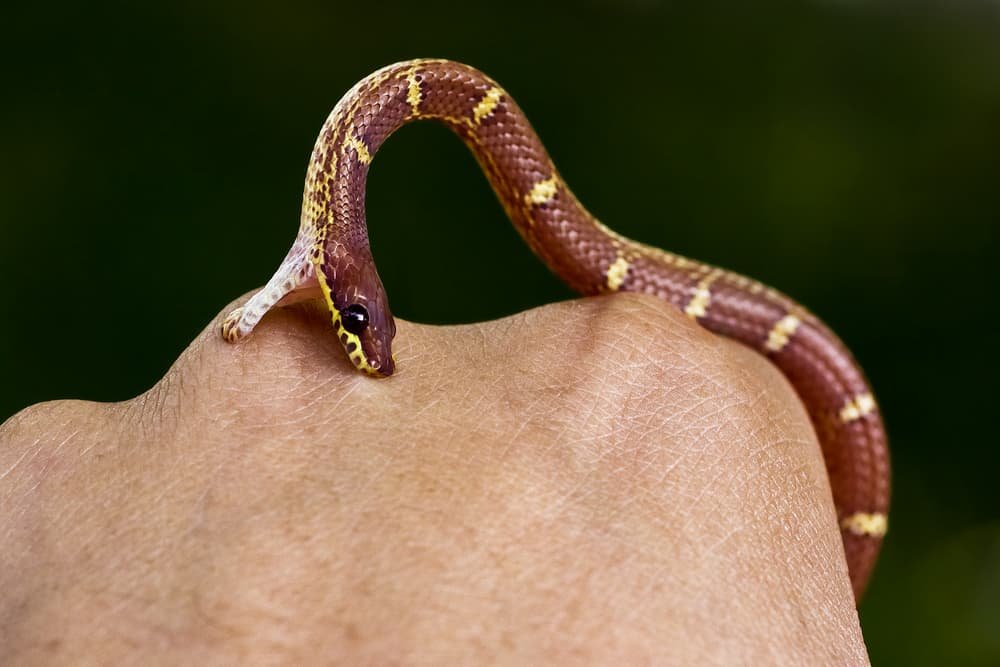
When a snake bites and won’t let go or coils itself around your hand, your first instinct might be to pull down on it.
Don’t.
This can worsen the wound since some snakes have curved teeth. By pulling downward, you risk ripping the snake’s teeth off, while also puncturing your skin and making the wound worse.
Instead, use the following herpetologist-recommended steps to remove a snake that won’t let go when it bites.
Use A Blunt Object To Gently Pry Open Its Mouth
If you have someone nearby, ask them to bring a small, blunt knife or a pen to gently pry open the snake’s mouth.
Ruffle Its Scales
In most cases, rubbing the snake’s scales against the lay can irritate the snake enough to get it to release its hold on you. You can grab its tail with your other hand and pet it roughly. Do this only if the snake is non-venomous and small.
Submerge It in Water
If you have access to a water container, submerge the snake underwater. This should immediately cause it to release its hold on you.
Of course, this only works for snakes that do not bite underwater, like sea snakes. Alternatively, squirt some warm water on the snake’s head to shock it into letting go.
Squirt Hand Sanitizer On The Snake
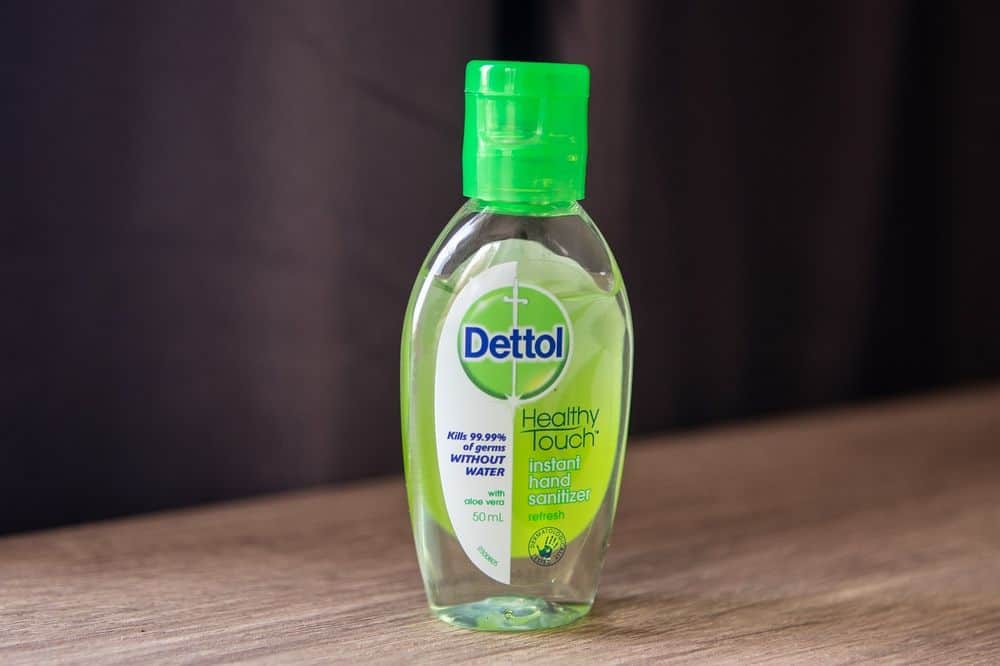
With larger snakes, squirting some hand sanitizer, vinegar, or Listerine mouthwash over the snake’s face can do the trick. The alcohol in the sanitizer and the strong scent of vinegar irritate the snake, so that it has no choice but to let go.
For venomous snakes (or cases where you don’t care if the snake lives), pour some alcohol (vodka or whiskey) directly on the snake’s face and eyes. This will kill the snake.
Bend Its Tail
For stubborn snakes and larger ball pythons that won’t let go during a bite, bending their tails upwards and backward causes immense pain to the snake. It is one of the fastest ways to get the snake to release you during a bite.
Let Smaller Snakes Bite You
In the case of smaller pet snakes, you could just let them keep biting your hand until they realize your hand is not their food. Their small teeth usually won’t do much damage.
How Do You Make A Snake Let Go Of A Rat?
Some ball pythons simply don’t let go of their prey items. However, as a snake owner, it is important not to play tug of war with your snake that has held on to its prey in its mouth.
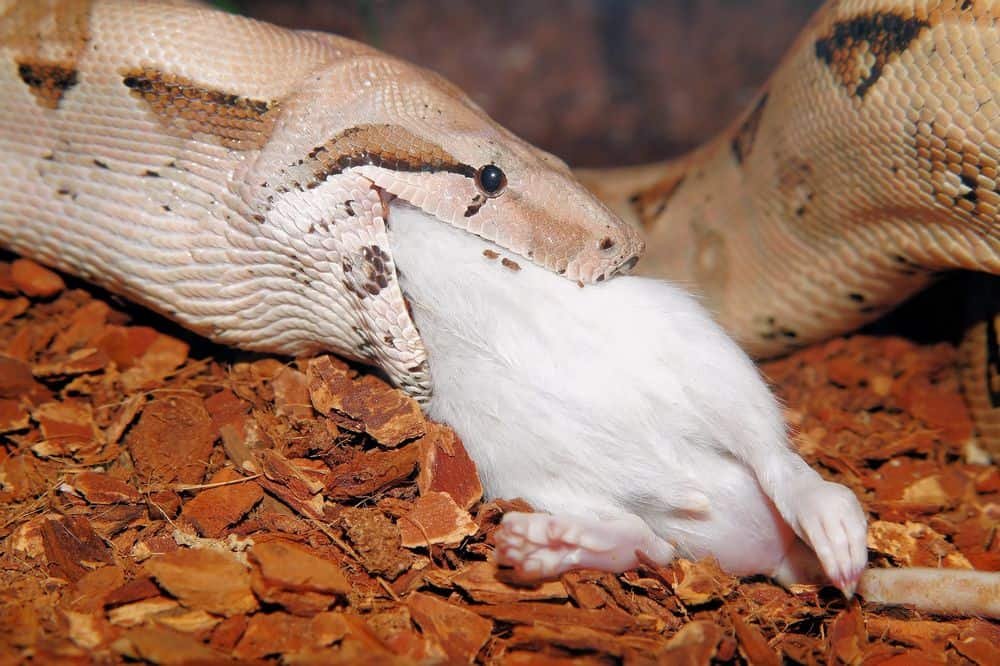
Doing so can stress your snake and it might even associate eating with that trauma. This could trigger the snake to stop eating completely and starve itself to death. Here’s what you should try and what you should avoid doing.
Do Not Tap The Snake On Its Nose
Avoid hitting, tapping, or hurting your snake by tapping it on the nose. Doing so can hurt your snake and might even make it aggressive.
Allow The Snake To Decide For Itself
If you decide at the last minute that the prey is simply too big for your snake, but your snake has already grabbed it and held it in its mouth, let it decide for itself. Snakes are smart and know how much to eat.
Let your snake eat the large prey slowly and simply opt not to feed it for several days afterward.
If your snake ends up eating the large prey, raise the temperature of the enclosure slightly for the next few days. The warmer environment will help your snake digest the large prey faster.
Always Measure Your Snake’s Food With Kitchen Scales
It is best to use kitchen scales to measure your snake’s food instead of trying to ascertain if it is the right size for your snake by laying it next to it. Once your snake smells the prey, it is natural for it to grab it.
If you must, you can place the prey outside your snake’s enclosure and try to make an assessment.
As A Last Resort
If you still insist on getting your snake to release its prey, here is what you can do as a last resort. Lightly squirt your snake with some diluted Listerine, vinegar, or warm water. Most snakes cannot stand these scents and will release their prey.
Four Things You Should Never Do For A Snake Bite

According to the CDC, here are four things you should never do when it comes to snake bites.
Do Not Try To Capture The Snake
Although you may want to identify the snake so you can acquire the right antivenom, it is best not to trap or capture the snake. You might end up risking more bites or getting someone else bitten.
Instead, try to remember the color and size of the snake. If you can, take a picture of the snake from a safe distance.
Do Not Cut The Wound Open Or Suck The Venom Out
Do not do any of these for a snake bite. These actions could increase the risk of infection. Instead, wash the bite with warm, soapy water.
Do Not Apply A Tourniquet To The Bite Site
By applying a tourniquet, you risk sequestering the venom locally, resulting in tissue damage. Therefore, it is best not to use one. Instead, cover the bite with a clean and dry dressing (after washing the bite with warm, soapy water first).
Avoid Painkillers, Alcohol, And Caffeine
You might be tempted to drink alcohol or caffeine or take some NSAIDs to numb the pain of the bite, but these substances might increase your risk of bleeding. Alcohol could also increase your heart rate, causing the venom to spread more rapidly.
Do Snake Bites Fully Heal?
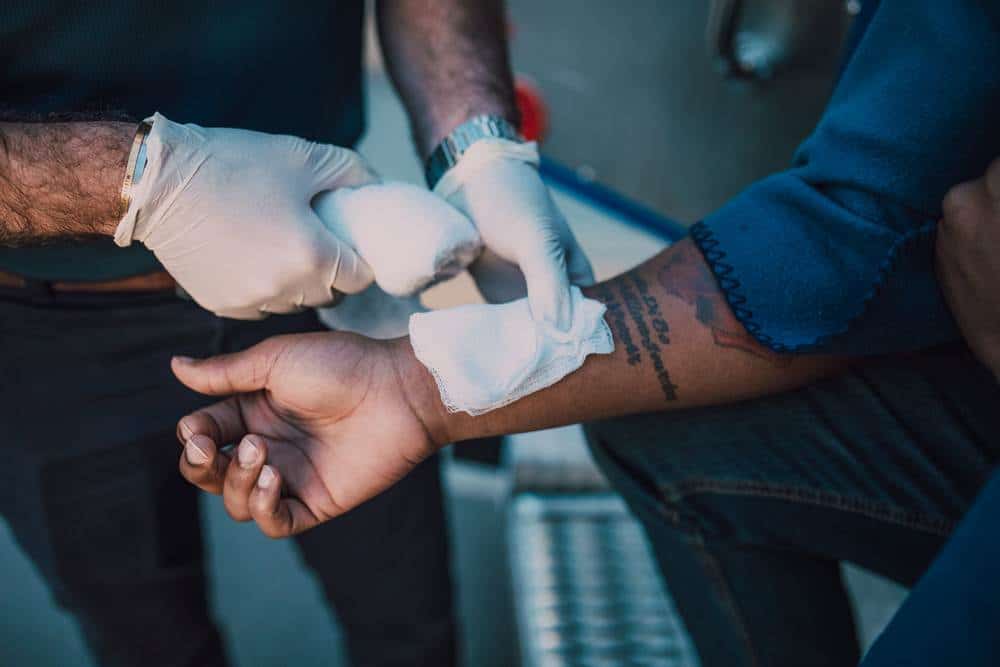
With venomous snake bites, most people will likely need hospitalization for a couple of days. The time required for healing from a snake bite depends on the type and size of the snake, the quantity of venom injected, and the victim’s age and overall health.
Young children could take between one and two weeks to recover fully from an adder’s bite. Elderly people or those with health issues could take between 1-9 months to fully recover from snake bites.
Almost 25% of elapid or viper bite victims continue to experience lingering effects, like pain and swelling, for weeks or months after being bitten.
How To Get A Snake To Let Go: Final Thoughts
Most venomous snakes bite and let go, so this is not a big issue with them. Obviously, the venom is the major problem with a bite from a venomous snake.
Constrictor snakes, on the other hand, tend to hold their bite. They use it to gain control over their prey as they wrap around it and constrict it.
Since many common pet snakes are constrictors (including the two most common ones: the corn snake and the ball python), snake owners are likely to face this problem at some point. If you do, try one of the 6 methods given above to get your snake to release its bite. It also helps to know how to get a constrictor to let go of you.
Leave a Reply